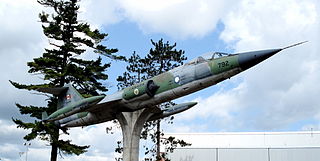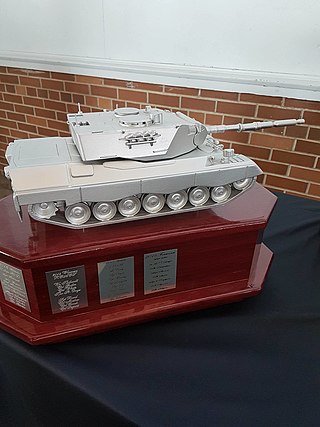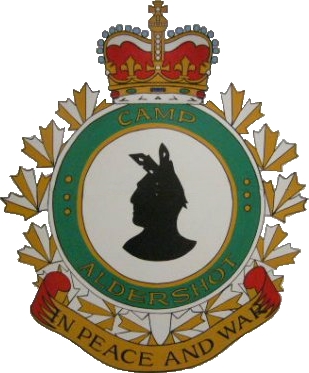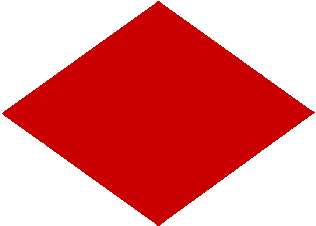
The Canadian Army is the command responsible for the operational readiness of the conventional ground forces of the Canadian Armed Forces. It maintains regular forces units at bases across Canada, and is also responsible for the Army Reserve, the largest component of the Primary Reserve. The Army is headed by the Commander of the Canadian Army and Chief of the Army Staff, who is subordinate to the Chief of the Defence Staff. The Army is also supported by 3,000 civilian employees from the public service.

Canadian Forces Base Borden, formerly RCAF Station Camp Borden, is a large Canadian Forces base located in Ontario. The historic birthplace of the Royal Canadian Air Force, CFB Borden is home to the largest training wing in the Canadian Armed Forces. The base is run by Canadian Forces Support Training Group (CFSTG) and reports to the Canadian Defence Academy (CDA) in Kingston.

A Canadian Forces base or CFB is a military installation of the Canadian Armed Forces. For a facility to qualify as a Canadian Forces base, it must station one or more major units.

The Royal Canadian Dragoons (RCD) is the senior armoured regiment of the Canadian Army by precedence. It is one of three armoured regiments in the Regular Force and forms part of the Royal Canadian Armoured Corps.

The Royal Canadian Armoured Corps is the armoured corps within the Canadian Army, including 3 Regular and 18 Reserve Force regiments, as well as the Royal Canadian Armoured Corps School.
5th Canadian Division Support Base Gagetown, formerly known as and commonly referred to as CFB Gagetown, is a large Canadian Forces Base covering an area over 1,100 km2 (420 sq mi), located in southwestern New Brunswick. It is the biggest facility in Eastern Canada, and Canada's second-largest facility.

The Worthington Trophy is a Canadian military award. It was awarded annually to the best reserve armoured unit in the Canadian Land Forces. It is named after Major-General F. F. Worthington, known as Fighting Frank – "The Father of the Royal Canadian Armoured Corps".
This is the structure of the Canadian Army, as of August 2022.
The Air Operations Branch is a personnel branch of the Canadian Forces (CF). All members of the branch wear the air force uniform.

The Corps of Royal Canadian Electrical and Mechanical Engineers (RCEME) is a personnel branch of the Canadian Armed Forces (CF) that provides army engineering maintenance support. All members of the corps wear army uniform. From the 1980s to 2013 it was called the Electrical and Mechanical Engineering Branch.

4th Canadian Division Training Centre is a Canadian Forces training facility operated by 4th Canadian Division of the Canadian Army.
A service battalion is a unit of the Canadian Armed Forces (CAF) that provides combat service support to a brigade group and its elements.
In the Canadian Armed Forces, a Regular Force unit or person is part of the full-time military, as opposed to being part of the Primary Reserve which has more flexibility. There are many bases and wings across Canada, and factors like trade, career progression, and environment will affect where the person ends up. They receive more pay and benefits than members of the Primary Reserve and can be ordered into overseas deployments.

5th Canadian Division Support Group Detachment Aldershot is a training facility for 5th Canadian Division of the Canadian Army. It is located in Kings County, Nova Scotia.
Lieutenant General William Alexander Milroy CM, DSO, CD was the Commander, Mobile Command of the Canadian Forces and later Assistant Deputy Minister of Defence, Personnel.

The Canadian Army Doctrine and Training Centre (CADTC), formerly the Land Force Doctrine and Training System (LFDTS), is a formation of the Canadian Army headquartered at McNaughton Barracks, CFB Kingston, Ontario. CADTC is the organization that is responsible for delivering army training and developing army doctrine. Approximately 3,200 officers and soldiers are assigned to CADTC. The organization was renamed on 18 July 2013 as part of the reorganization of the Canadian Army.
The Canadian Forces School of Military Engineering (CFSME), at CFB Gagetown in Oromocto, New Brunswick, is responsible for the conduct of 85 different courses that span all ranks and occupations within the Combat Engineering and Construction Engineering organizations. CFSME is the Canadian Forces centre of excellence in military engineer training.

Major-General David Craig Aitchison is a former Canadian military officer, who most recently served as the commander of the Canadian Defence Academy. He is the former Director of Army Staff and Director of Infantry for the Canadian Forces, the former Commandant of the Infantry School, the former Commander of the Combat Training Centre, and former Deputy Commanding General for Operations with US Army Alaska. MGen Aitchison holds a Bachelor of Business Administration from the University of New Brunswick. a master's degree in Defence Studies from the Joint Command and Staff Program at the Canadian Forces College, as well as a master's degree in Military Art and Science from the United States Army School of Advanced Military Studies. Aitchison was promoted to Brigadier General, while serving as Chief of Staff for the Combined Joint Forces Land Component Command - Operation INHERENT RESOLVE (CJFLCC-OIR). He was promoted major-general in June 2020 and took command of the Canadian Defense Academy in August 2020.
The following is a hierarchical outline for the Canadian Armed Forces at the end of the Cold War. It is intended to convey the connections and relationships between units and formations.
Major Sandra Marie Perron is a former Canadian Army officer. She was the first female infantry officer in the Canadian Army. Perron served in the infantry from 1991 to 1996, completing two tours of duty in Yugoslavia. While in the Army she was subjected to sexual harassment and "excessively rough" training.
Department of National Defense, 2011. Leader in Land Operations: LFDTS Land Force Doctrine and Training System












